This Replica Maple Leaf Natural Ground Pork Sausage Meat fulfills a request for a Canadian friend living away, who can't access the original!
It doesn’t have a ton of seasoning to it, but it will definitely get the job done when you’re an expat wanting your sausage rolls to taste more “Canadian”!

A few days ago, a Canadian friend - living in the USA - asked if I knew how to make American sausage taste like Canadian sausage.
She wanted to make sausage rolls, and none of the sausage down there tasted “right”.
I told her that - right off the bat - I’m kind of assuming summer savory was involved.
It seems to me that whenever a meat product doesn’t taste right in the USA, it’s the lack of summer savoury - we use it, they don’t tend to, down there.
She said that was fine, she happened to have some on hand. Perfect!
I asked which sausage she had used in Canada and told her I’d get a pack on the next day’s grocery order and see what I could do.
Great timing - not only did she catch me right before a grocery pickup, but also during a very short period of time when I was testing my limits with gluten!
So, I ordered a chub of Maple Leaf Natural Sausage and some ground pork, confident that I’d have any other necessary spices on hand.
I figured there are likely to be other Canadians wanting the same thing, so planned to document the process for a post.
Who knows, maybe someone will find the process interesting?
Anyway, here’s my process for replicating a retail food item.
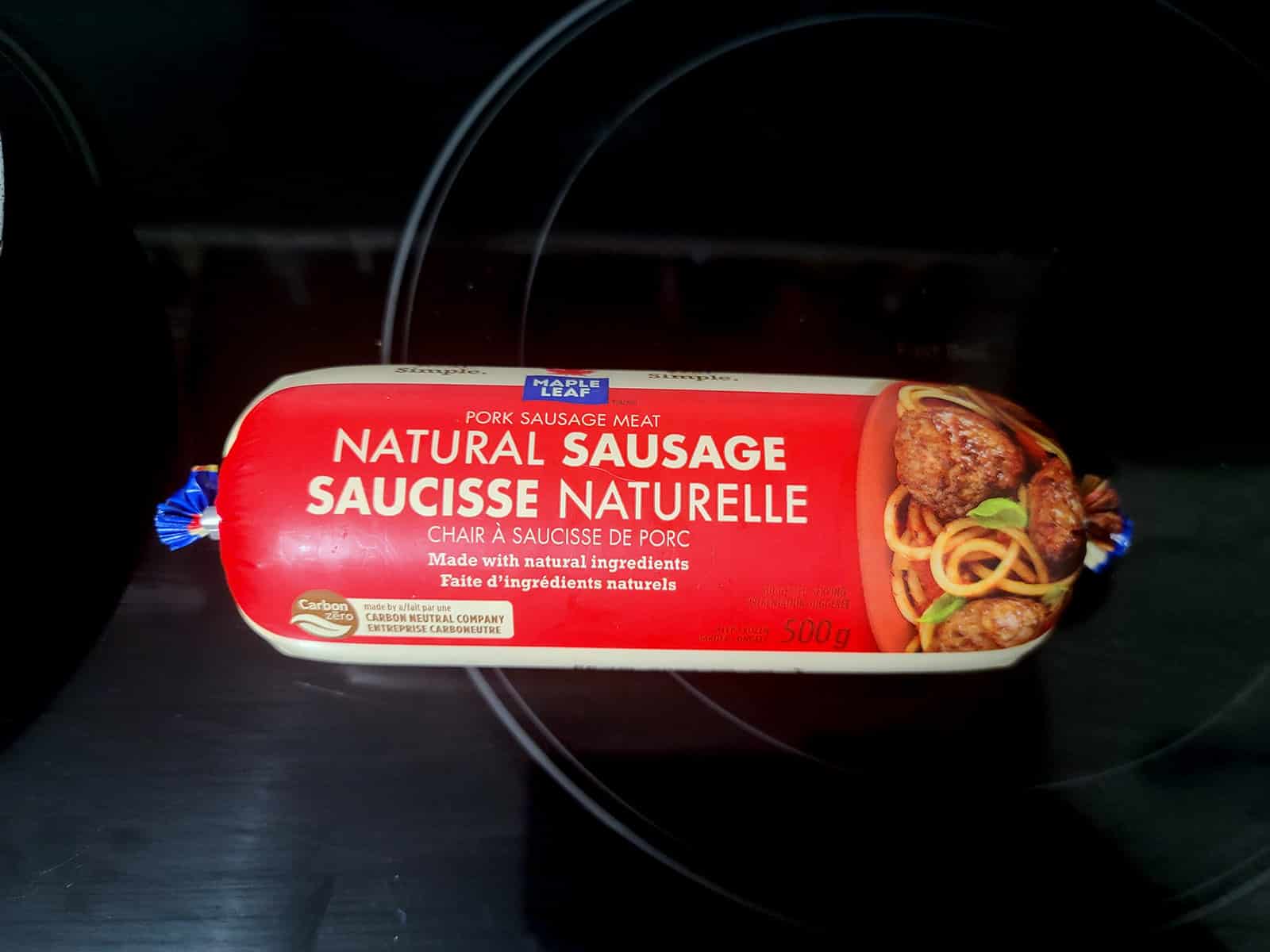
Research
After ordering the sausage and ground pork, I do some quick information-gathering, to establish some base parameters and goals.
In this case, it was looking up the ingredients list and nutritional information for her choice of sausage, and comparing it against what would be the main ingredient of my replica recipe - ground pork.
I normed them to a common serving weight - 100 g - and compared the two.
The sausage had 73 more calories per serving, 5 grams of carbs (ground pork has none), 1 gram of sugars, etc. Good information!
Focusing on the fat content, it was obvious that I’d need to add fat to ground pork - a fair amount of it, at that!
2 oz per lb of ground pork, specifically!
SO I got ahold of Robyn to ask if she wanted more flavour accuracy or all around accuracy, and to enquire about options available to her.
For me, I would have looked to lard, as pork fat is not available on any of the grocery pickup or delivery services we use.
However, lard is hard to come by where she lives, and she can get pork fat from her butcher. Good to know!
There was an excess 500 mg sodium per 100 grams, which works out to ¼ teaspoon per.
Using 1 teaspoon salt per lb of pork comes to just under that, as far as sodium content goes, but allows for the extra sodium that will come from using bread crumbs.
Interestingly enough, the ingredients label said “spices”, with no mention of herbs.
I wasn’t sure what the food labeling regulations in Canada required, so planned to look it up later. Maybe they can include the herbs as part of the “spices”?
The Sugar Issue
There are two main ingredients that contribute to the stated carbohydrate content (5 grams per 100 grams of sausage) - the cane sugar and the wheat crumbs.
Theoretically, this should make it easy to ballpark - I could start with “sugars” (1 gram per 100 grams of sausage) as the max amount of actual sugar in it, and use the remaining carbohydrate content to give a clue about how much wheat crumb to add.
(Along with the fact that the wheat crumbs are going to weigh more than the sugar, per the order they’re listed in).
... but the math doesn’t work out.
The sugar taste is overwhelming, but to meet the 1 gram sugars per 100 grams, that would mean just over 1 teaspoon sugar per lb of ground pork. It tastes WAY sweeter.
Also, that would mean that a fair amount of carbs come from the wheat crumbs, rather than the sugar - but it has fiber listed as being 0g.
So... that’s fun.
The Initial Taste Test
The next morning I rolled out of bed at 4:30 am - to perfect quiet - and decided to start the process
Quiet is important to me when replicating something - a lot of noise can get in the way of interpreting smells and tastes.
Yeah, I have no idea either. Maybe the brain alots a certain amount of focus for ~the senses~ and one being used / distracted takes away from the others?
Anyway, hearing doesn’t really come into play here, so I don’t need to be using it.
Before even cooking, I let smell and sight do their thing.
Visually, I don’t see any green at all - not even the tiniest of flecks. Weird! Guess I was wrong about savoury!
I do see that there is a LOT of fat, visibly so. That makes me feel better about my earlier calculations!

The source material.
Things tend to smell different at different temperatures, so I smell throughout the process to see what new information is available as I go.
Straight from the fridge, I couldn’t smell much - the faintest hint of something bordering on maple syrup, but they would have had to declare maple syrup, so... no.
I fried some up as a taste test, making note of how it behaved - texture as it cooked, how it caramelized, shrinkage, how - and how much - fat cooked off it, etc.
Not only is this good info for coming up with a ballpark recipe to start out with, it’s good to have several different points of comparison between the source material and the experimental recipe.
For instance, I’m suspecting right off the bat that there is some weirdness with the sugar labeling in the source material
I’ll be honest, if it weren’t for the fact that the ingredients lists “spices”, I would tell you that this had sugar and salt, no spices.
Maybe the VERY slightest bit of onion or garlic, but it would be like ... this pig walked past an onion or garlic bulb on the way to being slaughtered.
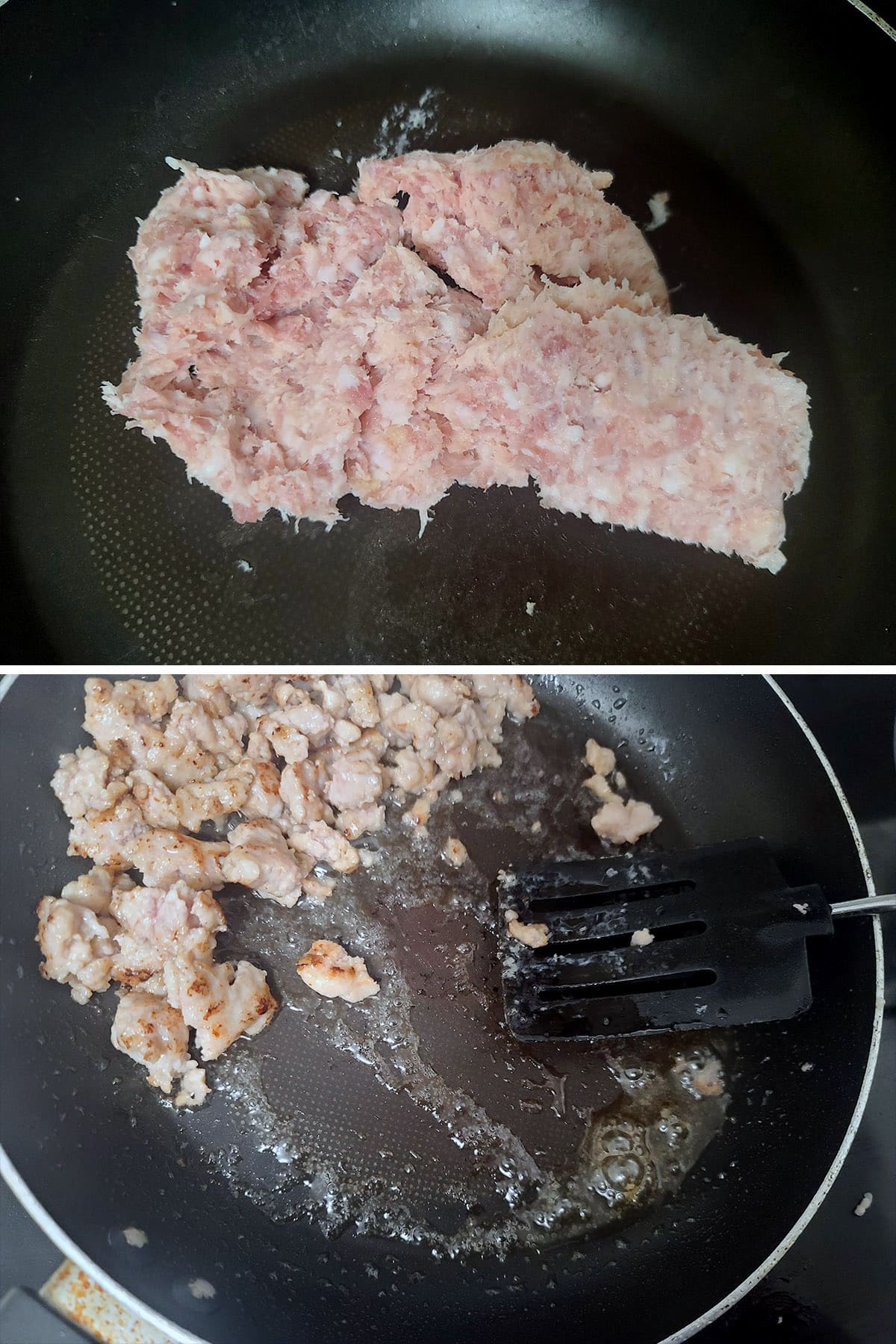
Adjusting the Plan
After talking to Robyn about the discrepancies I was finding (between nutritional labeling, ingredients list, and actual taste), I decide to just use the nutritional info as a ballpark, then forget about it.
I have no idea what’s going on with the labeling, but I suspect there’s a matter of scale / rounding that applies, and will make things way more difficult.
It would definitely be interesting to see the nutritional info for one of their industrial batches, when smaller portions and rounding down don’t apply.
Anyway, when all was said and done, I had a base ballpark for items that didn’t rely entirely on taste - pork, fat content, sodium, and sugar.
I decided to start out with the stated “sugars” as my base, knowing full well that it’s very unlikely to be as sweet as theirs.
By my estimation, it would end up needing somewhere between 2-3x as much.
So, my base recipe was:
1 lb ground pork
2 oz pork fat
1 teaspoon cane sugar
1 teaspoon Salt
“Spices” and wheat were wildcards, and would be added after the first round.
I’d cook up a batch and see the difference in texture and flavour, and go from there.
The ingredients specify “cane sugar”, and I’ll be using a golden one - the smell / taste bordering on maple syrup tells me that we’re looking at more of a brown sugar, rather than a white form of cane sugar.

Initial Trial
I whipped up a base batch and cooked a small amount to see how it behaved.
Visually, it looked good - I was pretty confident on the fat addition.
Right away, I could see that there was NOT enough sugar - it definitely didn’t caramelize the same way.
The fat cooked down in the same way that the source material did, but the meat itself shrank a lot more.
This gave me some good info about the role of the wheat crumbs and water in the source, and the degree to which it made a difference on the pork.
Taste wise, mine wasn’t as sweet, the salt level was about perfect. Weirdly, it wasn’t missing anything for flavour?
I was expecting there to be an obvious difference, to pinpoint what “spices” meant in the labeling. Maybe the VERY faintest hint of onion.
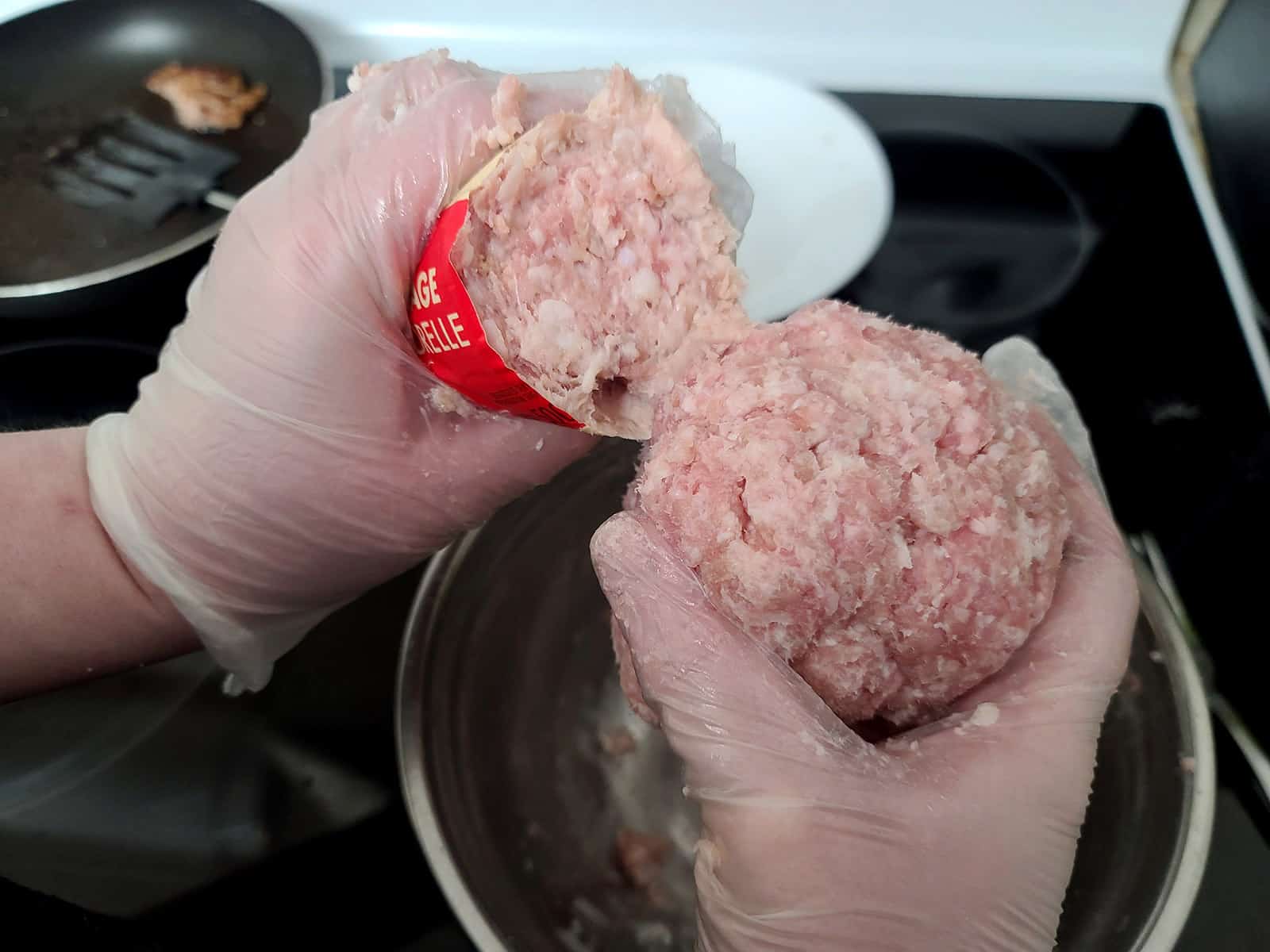
Source material in left hand, first batch of homemade in right. Very similar in appearance!
More Research
I’d never tried a sausage SO unseasoned, so I tried another round of internet searching for info.
Interestingly, on their commercial / food service site, one type of sausage listed “onion powder” and “garlic powder”, rather than “spices”.
... however, another sausage product on the same site used “spices”, without either onion or garlic specified.
Are they being used interchangeably? Does “spices” rather than “garlic and onion” mean that garlic and onion could be present BUT that there’s something else?
Augh.
Being able to replicate by taste is kind of useless when there’s so little of something, as to be almost completely imperceptible.
Important Note
I’ve brought this up on a few occasions when it comes to some weirdness happening across food blog - and Yankee Candle - reviews out there: Not everyone has a functioning sense of smell and/or taste right now.
When favourite restaurants are suddenly turning out dishes that are too salty for anyone to eat (a pattern I noticed on restaurant groups a few months ago), it’s very likely that the cook is suffering the aftereffects of covid.
It’s something I’m very aware of, and a big part of the reason I’ve been so diligent in avoiding infection.
My not being able to taste anything other than the sugar is not covid related. I haven’t had it, I haven’t lost my sense of smell or taste at all (and I test it regularly).
Everything tastes normal, this source material sausage is just... not really seasoned.
Visually, aromatically, and by taste - there’s really not a lot going on here.
Anyway, just wanted to put it out there. Yes, that variable - ME - had been considered and tested!

Second Round
Using the information obtained in the taste test and first experiment round, I honed my base recipe.
For “toasted wheat crumbs”, I finely ground some panko with a mortar and pestle.
There are no bread crumbs visible in the source material, before or after cooking. They would have to be VERY finely ground, to really blend in.
“Water” is present in their ingredients list - more than the crumbs, by weight.
Given the way it cooked up, I was pretty sure the crumbs were soaked in the water before adding, much in the way some people soak bread when making meatballs.

I added ⅛ teaspoon Onion powder.
Now, for reference... when I’m making homemade sausage in general, I usually add a full teaspoon EACH of onion and garlic powder, along with ground pepper, herbs, and spices.
I don’t want to be judged by this recipe, LOL. I’m aiming for accuracy, not “how I’d make this better”.
The toasted wheat crumbs worked well, but I would need a bit more, as well as a bit more water in the next round.
⅛ teaspoon onion powder is really not much at all, but - when I compared cooked samples of this second batch and the source material - it tasted OVERWHELMINGLY like onion in comparison.
Finally, I doubled the sugar, but it was still not quite as sweet as the source material.
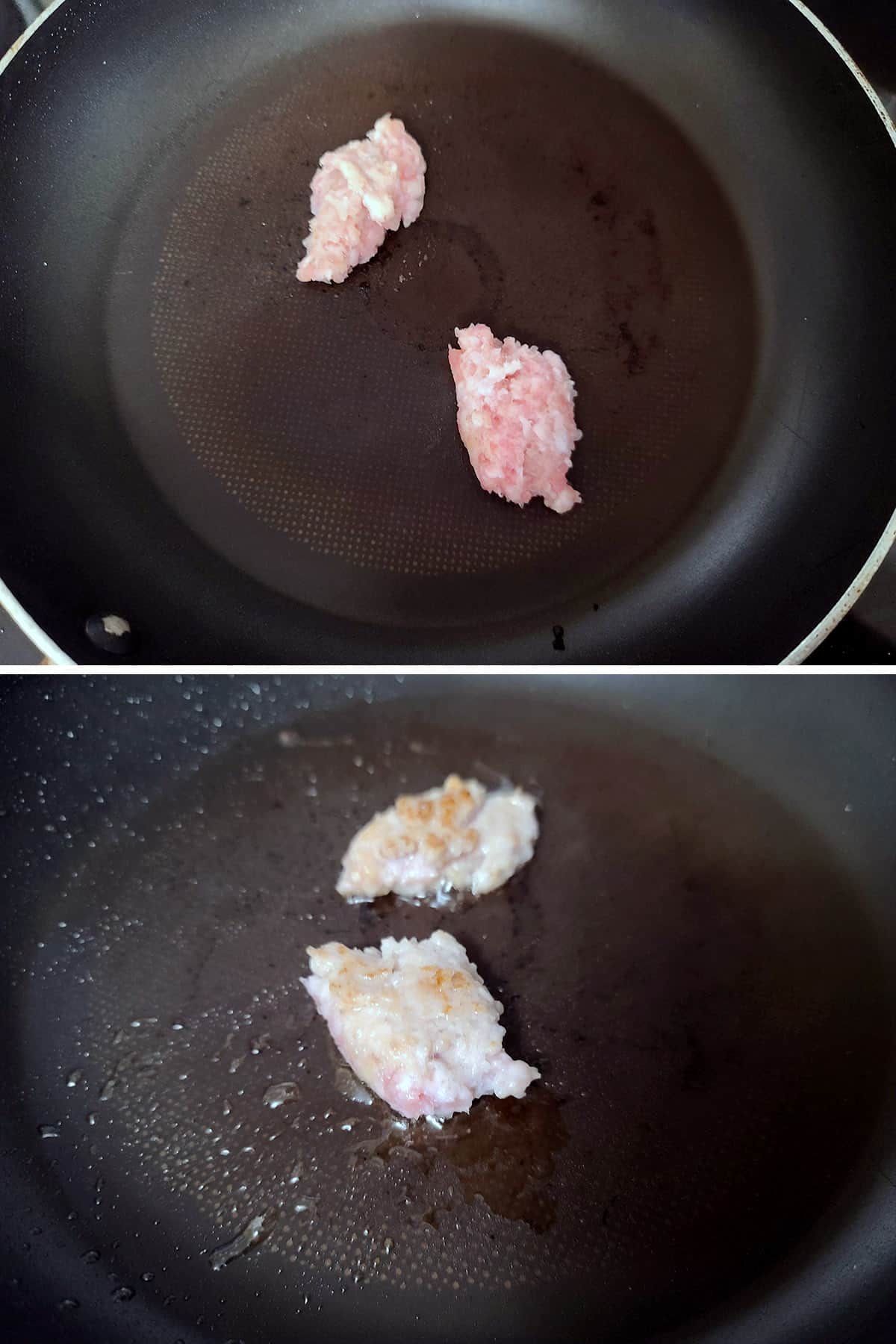
Source material is the top piece, the homemade version is the lower piece.
The Final Recipe
In the recipe card at the end of this post, you’ll find the final recipe.
I want to note that you can very likely just skip the onion and garlic altogether, and you likely won’t notice the difference from the source material, even if you sampled them side by side.
When I say a “pinch” of garlic powder, I mean the slightest pinch. You may be better taking the lid off your garlic powder, and lightly just blowing across the top of it to get just a waft of it into your bowl.
I know I probably sound like I’m being facetious here, but I really wonder if their recipe is like ... 1 tablespoon onion/garlic/ground pepper/whatever per 100 lbs.
Seriously, I almost wonder if I should buy a second chub from a different store, in case I got a weird batch.
It’s not a product I’ve used before, so I don’t have any previous taste memory to norm it off of.
This recipe cooks up the same way, has a very similar texture, tastes the same, and generally behaves the same.
I was actually surprised to see that the nutritional information came in pretty close, as well:

One Last Note
With all of the caveats here, I should mention one more:
Across baking groups, there are a lot of complaints about how butter and flour are behaving differently, how favourite baking mixes are smaller now, etc.
The sausage I bought was what was available to me, in Ontario, in late December 2022.
Without having any previous experience with it, I have no idea if/how this product may have changed over the years, or if it’s been in any way affected by supply issues/product changes / etc.
This recipe is accurate to the Maple Leaf Natural Pork Sausage I bought this week.
Hopefully that sausage is the same as everyone remembers it to be from their past experiences!
For usage: The chub I bought was 500g.
This recipe makes just a smidge over 500 grams, and can be used - a whole batch - in place of 1 500g package of Maple Leaf Sausage.
Anyway, hope this helps some expat Canadians out there!
Let me know what you think, in the comments below!
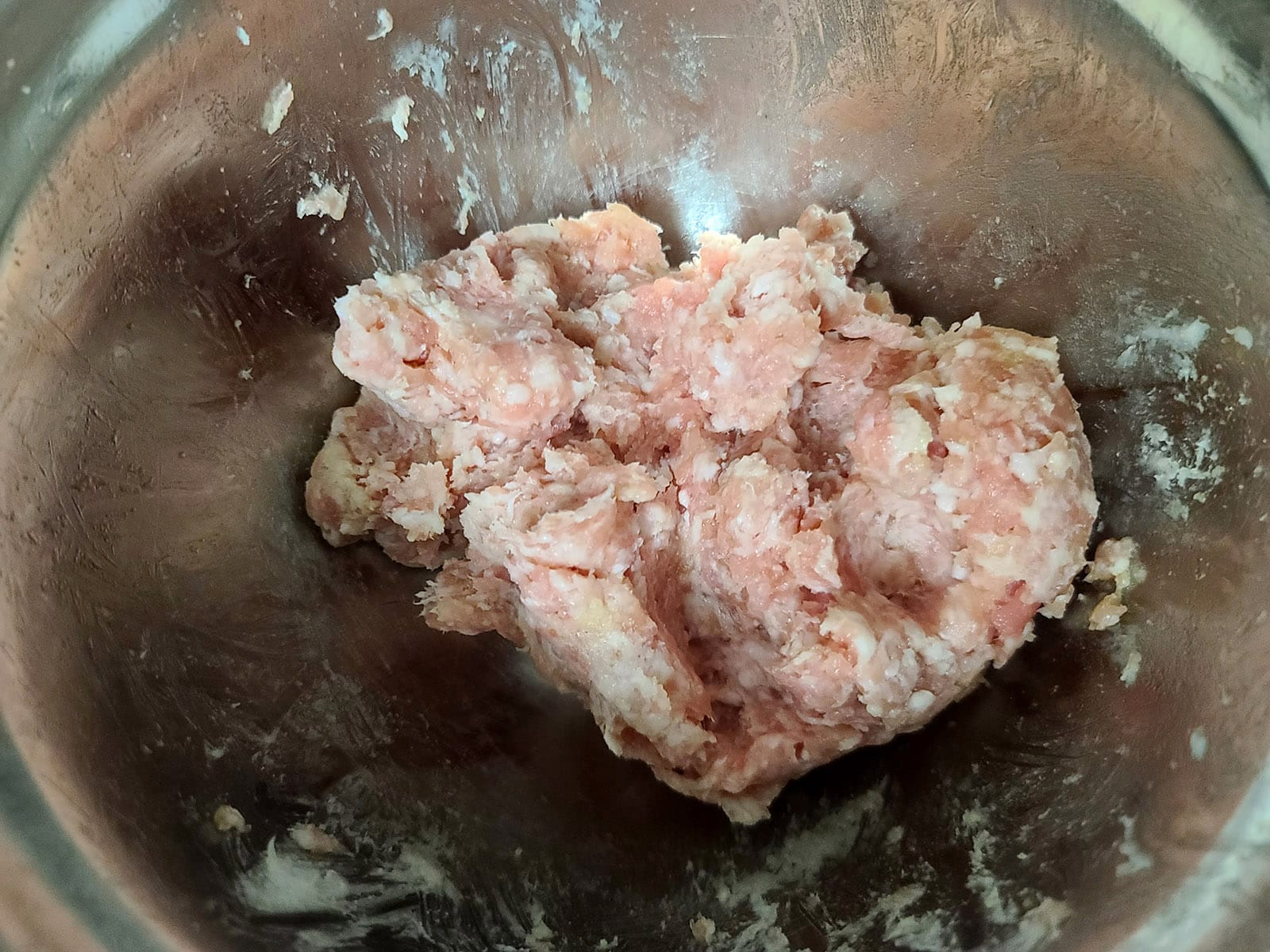
More Canadian Comfort Food!
Whether you’re a Canadian in the US or not, we could all use some comfort food these days. Here are some Canadian Favourites!
Back Bacon / Canadian Bacon
Beep
Canadian Popcorn Seasoning Recipes
Clodhoppers
Confetti Bars
Dill Pickle Dip
Doughnut Holes - Timbits!
French Canadian Pea Soup
Homemade Deep N Delicious Cake
Homemade Wunderbars
Maple Butter Tarts
Montreal Bagels
Persians Recipe
Puffed Wheat Squares
Replica Swiss Chalet Sauce
Tiger Tail Ice Cream
Looking for even more Canadian recipes? Check out our full Canadian Recipes list!

Looking for more Canadian recipes? Be sure to check out my cookbook, "More Than Poutine: Favourite Foods from my Home and Native Land”.
"More than Poutine" is a Canadian cookbook like no other - written by a Canadian living away, it includes both traditional home cooking recipes, as well as accurate homemade versions of many of the snacks, sauces, convenience foods, and other food items that are hard to come by outside of Canada!
Order your copy here on this site, through Amazon, or through any major bookseller!
Ground Pork Sausage Meat
Equipment
- Bowl
Ingredients
- 2 tablespoon Finely Ground Panko You want it almost powdered.
- 1 ½ tablespoon Water
- 1 lb Lean Ground Pork
- 2 oz Pork Fat finely ground. (Lard works)
- 2 ½ teaspoon Golden brown cane sugar packed
- 1 teaspoon Salt
- 1/16 teaspoon Onion powder
- pinch Garlic optional VERY SLIGHT PINCH
Instructions
- In a small bowl, mix together the panko crumbs and water.
- Add to a large mixing bowl, along with remaining ingredients.
- Use your hands to gently mix and distribute all of the ingredients. Gently form into a log, chill or freeze until you’re ready to use it.



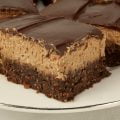



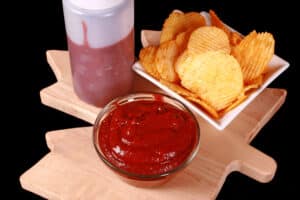
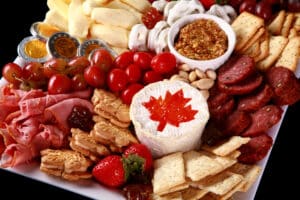
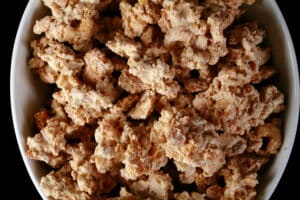
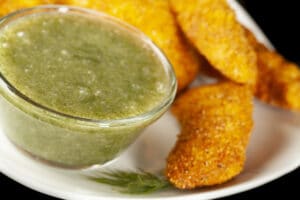
Michelle
I just want you to know that I LOVE reading your recipe development stores and appreciate all of the time you put into them. As a Canadian living in the US (and trying to patiently bide my time until I can move home again), I have been thrilled to discover your cookbook and blog. So much good information to be had here!
Marie Porter
Thank you so much! I really appreciate it!